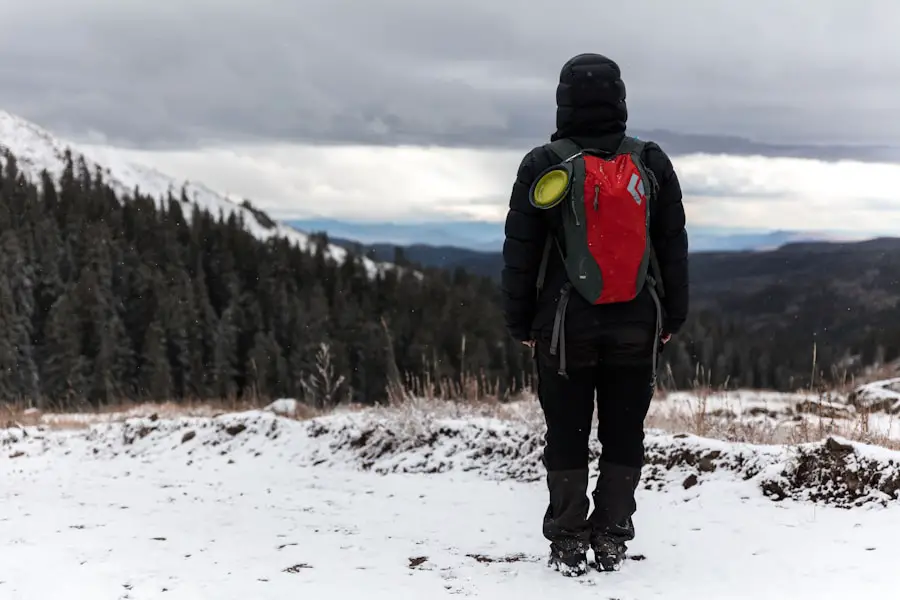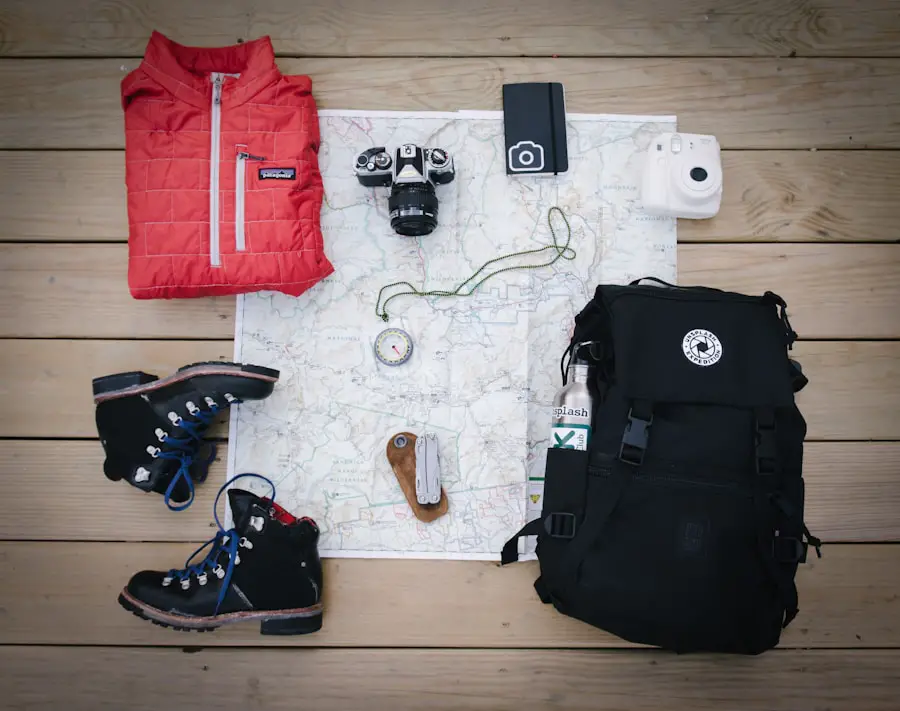Layering is a fundamental principle in outdoor clothing that significantly enhances comfort and performance in cold weather conditions. The concept revolves around wearing multiple layers of clothing, each serving a specific purpose, to create an effective thermal barrier against the elements. This method allows for better temperature regulation, as it enables individuals to add or remove layers based on their activity level and the changing weather conditions.
For instance, during a vigorous hike, a person may generate considerable body heat, making it necessary to shed an insulating layer to prevent overheating. Conversely, when taking a break or facing a sudden drop in temperature, adding an extra layer can help retain warmth. Moreover, layering provides versatility and adaptability, which are crucial for outdoor enthusiasts.
Different activities may require varying levels of insulation and protection. For example, a base layer designed for moisture-wicking can keep sweat away from the skin during high-intensity activities, while an insulating layer can trap heat during periods of rest. The outer layer serves as a shield against wind and precipitation, ensuring that the inner layers remain dry and effective.
This dynamic approach to dressing not only enhances comfort but also contributes to overall safety by reducing the risk of hypothermia or overheating.
Key Takeaways
- Layering is important for regulating body temperature and staying comfortable in cold weather.
- Choose base layers made of moisture-wicking materials like merino wool or synthetic fabrics.
- Insulating layers like fleece and down jackets are essential for trapping heat and staying warm.
- Outer layers should be windproof and waterproof to protect against the elements.
- Don’t forget to bring hats, gloves, scarves, and proper footwear to stay warm and comfortable on cold weather hikes.
Base Layers: Choosing the Right Material
The base layer is the first line of defense against cold weather and plays a critical role in moisture management. When selecting a base layer, the choice of material is paramount. Synthetic fabrics such as polyester and nylon are popular choices due to their excellent moisture-wicking properties.
These materials draw sweat away from the skin, allowing it to evaporate quickly, which helps maintain a comfortable body temperature. Additionally, synthetic base layers tend to dry faster than natural fibers, making them ideal for active pursuits where perspiration is inevitable. On the other hand, merino wool has gained popularity as a base layer material due to its unique properties.
Unlike traditional wool, merino wool is soft and non-itchy, making it comfortable against the skin. It also possesses natural temperature-regulating abilities, keeping the wearer warm in cold conditions while remaining breathable in milder temperatures. Furthermore, merino wool has inherent antimicrobial properties that help reduce odor buildup, making it suitable for multi-day excursions without frequent washing.
When choosing a base layer, consider factors such as fit and weight; a snug fit is essential for effective moisture management, while lightweight options are preferable for high-intensity activities.
Insulating Layers: Keeping Warm with Fleece and Down

Insulating layers are crucial for retaining body heat in cold weather conditions. Two of the most common materials used for insulation are fleece and down, each offering distinct advantages. Fleece is a synthetic fabric known for its lightweight and breathable qualities.
It provides excellent warmth-to-weight ratio, making it an ideal choice for active pursuits where mobility is essential. Fleece jackets or pullovers can be easily layered over a base layer and under an outer shell, providing warmth without bulk. Additionally, fleece is quick-drying and retains its insulating properties even when damp, making it a reliable option for unpredictable weather.
Down insulation, on the other hand, is renowned for its superior warmth and compressibility. Made from the soft under-feathers of ducks or geese, down provides exceptional thermal efficiency by trapping air pockets that retain heat. Down jackets are incredibly lightweight and packable, making them easy to carry on long hikes or trips.
However, one must consider that down loses its insulating properties when wet; therefore, it is essential to pair down insulation with a water-resistant outer layer or opt for hydrophobic down that retains its loft even in damp conditions. When selecting an insulating layer, consider the intended activity level and weather conditions to ensure optimal warmth without sacrificing mobility.
Outer Layers: Protecting Against Wind and Rain
| Product | Waterproof Rating (mm) | Breathability (g/m2/24h) | Windproof |
|---|---|---|---|
| Jacket A | 10,000 | 15,000 | Yes |
| Jacket B | 20,000 | 20,000 | Yes |
| Jacket C | 15,000 | 18,000 | Yes |
The outer layer serves as the first line of defense against environmental elements such as wind, rain, and snow. A well-designed outer layer should be both waterproof and breathable to ensure comfort during outdoor activities. Materials such as Gore-Tex and other proprietary waterproof-breathable fabrics are commonly used in high-quality jackets and pants.
These materials allow moisture vapor from sweat to escape while preventing external water from penetrating the fabric. This balance is crucial for maintaining comfort during strenuous activities where perspiration levels can be high. In addition to waterproofing, wind resistance is another critical feature of an effective outer layer.
Wind can significantly increase heat loss from the body, making it essential to choose garments that provide adequate protection against chilling gusts. Many outer layers come with adjustable hoods, cuffs, and hems to create a snug fit that minimizes wind penetration. Features such as ventilation zippers can also enhance breathability during high-energy activities by allowing excess heat to escape without compromising protection from the elements.
When selecting an outer layer, consider factors such as fit, weight, and additional features like pockets or reflective elements that enhance visibility in low-light conditions.
Accessories: Hats, Gloves, and Scarves
Accessories play a vital role in maintaining warmth and comfort during cold weather hikes. A significant amount of body heat is lost through the head; therefore, wearing a hat is essential for retaining warmth. Beanies made from wool or synthetic materials provide excellent insulation while also wicking moisture away from the scalp.
Additionally, hats with ear flaps or those that cover the neck can offer extra protection against biting winds. Gloves are another critical accessory that should not be overlooked. The hands are particularly susceptible to cold exposure, so choosing gloves that provide both warmth and dexterity is essential.
Insulated gloves made from materials like fleece or down offer excellent warmth but may sacrifice some finger mobility. For those who require more dexterity—such as when handling gear—glove liners made from merino wool or synthetic materials can be worn underneath more substantial gloves for added warmth without compromising grip. Scarves or neck gaiters can also provide additional insulation around the neck area, preventing cold air from entering through gaps in clothing.
Footwear: Choosing the Right Boots for Cold Weather

Footwear is one of the most critical components of cold-weather gear, as proper insulation and protection are essential for maintaining comfort during hikes in frigid conditions. Insulated boots designed specifically for cold weather are equipped with features that enhance warmth while providing traction on slippery surfaces. Look for boots with thermal insulation materials such as Thinsulate or down fill that trap heat while remaining lightweight.
Waterproofing is another crucial aspect of cold-weather footwear. Boots made with waterproof membranes like Gore-Tex keep feet dry by preventing water from seeping in while allowing moisture vapor to escape. This feature is particularly important when hiking through snow or slush, where wet feet can quickly lead to discomfort and frostbite.
Additionally, consider boots with good tread patterns that provide traction on icy or uneven terrain; Vibram soles are often favored for their durability and grip.
Packing Essentials: What to Bring on a Cold Weather Hike
When preparing for a cold-weather hike, careful planning regarding what to pack is essential for ensuring safety and comfort throughout the journey. In addition to clothing layers discussed earlier, hikers should consider bringing extra items that cater to specific needs during their outing. A well-stocked backpack should include essentials such as food and water; high-energy snacks like nuts or energy bars can provide quick fuel during breaks.
A first-aid kit is another critical item that should not be overlooked; it should contain basic supplies such as adhesive bandages, antiseptic wipes, pain relievers, and blister treatment options. Additionally, navigation tools like maps or GPS devices are vital for ensuring hikers stay on course in unfamiliar terrain. A multi-tool or knife can also prove invaluable for various tasks ranging from gear repairs to food preparation.
Tips for Staying Comfortable and Safe on Cold Weather Hikes
Staying comfortable and safe during cold-weather hikes requires attention to detail and proactive measures. One of the most effective strategies is to monitor your body temperature regularly; if you start feeling too warm or sweaty, take a moment to adjust your layers accordingly. Conversely, if you feel chilled during breaks or when stopping for extended periods, adding an insulating layer can help maintain warmth.
Hydration is equally important in cold weather; many hikers underestimate their fluid needs when temperatures drop but can still become dehydrated due to dry air and exertion levels. Carrying insulated water bottles can help prevent liquids from freezing while ensuring easy access during breaks. Additionally, being aware of signs of frostbite or hypothermia—such as numbness in extremities or excessive shivering—is crucial for early intervention.
Planning your route carefully and checking weather forecasts before heading out can also enhance safety during cold-weather hikes. Opting for trails that are well-marked and familiar can reduce the risk of getting lost in adverse conditions. Finally, hiking with a buddy or group not only enhances safety but also provides companionship that can make the experience more enjoyable despite challenging weather conditions.
If you’re planning a hiking trip in cold weather, it’s important to dress appropriately to stay warm and comfortable. One helpful article to check out is 5 Must-Have Minimalist Travel Backpacks for Spring Adventures 2025, which provides tips on choosing the right backpack for your outdoor adventures. Having a reliable backpack can make a big difference in your hiking experience, allowing you to carry all the necessary gear and essentials with ease.
Love travel? Join Our Facebook Community For More Tips.
FAQs
What are the essential clothing items for hiking in cold weather?
Essential clothing items for hiking in cold weather include a moisture-wicking base layer, insulating mid-layer, waterproof and windproof outer layer, warm hat, gloves, and insulated hiking boots.
What materials are best for hiking in cold weather?
For hiking in cold weather, it is best to choose clothing made from moisture-wicking and insulating materials such as merino wool, synthetic fibers like polyester, and down or synthetic insulation for jackets.
How should I layer my clothing for hiking in cold weather?
Layering is key for hiking in cold weather. Start with a moisture-wicking base layer to keep sweat away from the skin, add an insulating mid-layer for warmth, and finish with a waterproof and windproof outer layer for protection from the elements.
What type of pants are suitable for hiking in cold weather?
For hiking in cold weather, it is best to choose insulated and waterproof pants to keep your legs warm and dry. Look for options with reinforced knees and seat for added durability.
Are there any specific accessories I should bring for hiking in cold weather?
Specific accessories to bring for hiking in cold weather include a warm hat, gloves or mittens, a neck gaiter or scarf, and insulated hiking socks. It’s also important to have sunglasses and sunscreen to protect against snow glare and UV rays.
What footwear is recommended for hiking in cold weather?
Insulated and waterproof hiking boots are recommended for hiking in cold weather. Look for options with good traction to navigate snowy or icy trails, and consider using gaiters to keep snow out of your boots.
